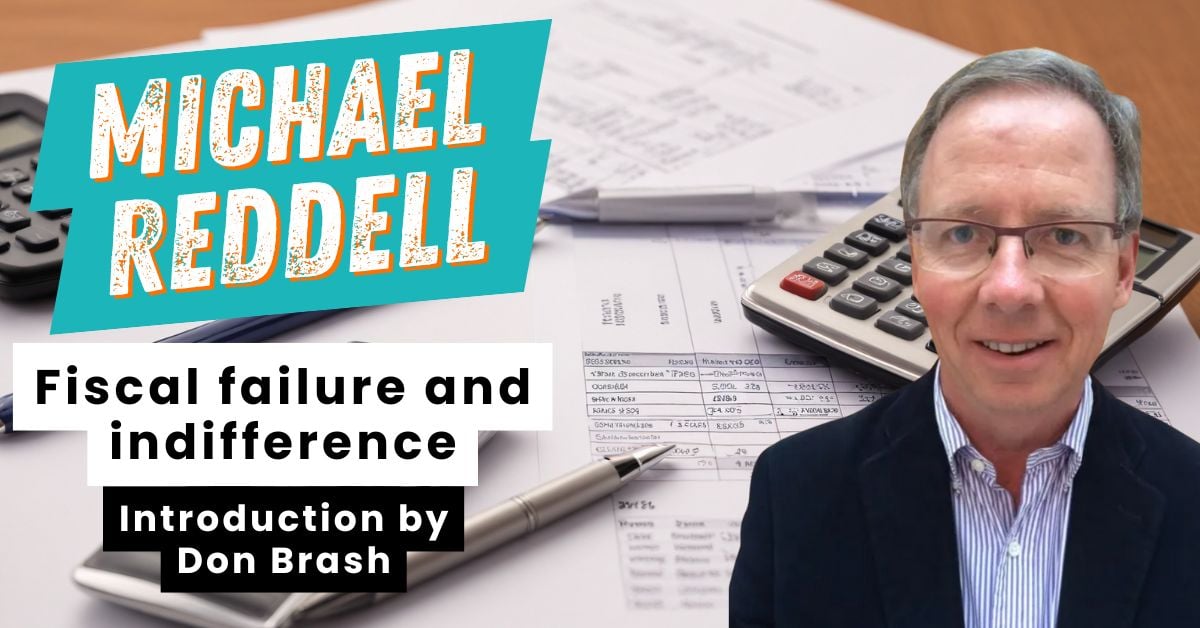
By Michael Reddell
Don Brash: This short analysis of the current fiscal position as compared with the fiscal position as projected shortly before the Labour Government left office is sobering.
Chris Hipkins and other Labour spokespeople are talking as if the current Government has cut government spending drastically, creating the “politics of austerity”. But over the next few fiscal years core government spending is projected to be as high as, or slightly higher than, that projected in Labour’s last Budget.
So much for the “politics of austerity”!
Michael Reddell was an economist of gradually increasing seniority at the Reserve Bank throughout my 14 years as Governor, and for more than 10 years beyond that. In my opinion, he is one of the most astute economists in New Zealand.
I was away in Papua New Guinea last week when the HYEFU came out, and have only just gotten round to looking at the numbers. Quite possibly, what is in this post will be repeating ground others have covered, and if so the post will end up being mostly for my records (good to be able to look back and see what one said at the time).
It was this tweet from a non-partisan analyst that really caught my eye:

Three sets of spending forecasts: those for Labour’s final Budget last year, those from last year’s PREFU (and available to political parties finalising their fiscal promises), and those from last week’s HYEFU. They run out only to the year to June 2027, because that is as far as the forecasts done in 2023 went.
Spending on core Crown expenses is as high or a little higher than in Labour’s last Budget.
It isn’t because interest rates are higher (out of the government’s control); in fact, primary spending is also a touch higher over four years than was planned in last year’s Budget.
It isn’t because of the state of the business cycle: the output gap forecast now for 26/27 is almost identical to that forecast for 26/27 in last year’s Budget.
Overall, core Crown expenses are forecast to be 32.2 per cent of GDP in 26/27, up from 31.5% for 26/27 in last year’s Budget.
And net debt (excluding the – quite variable – NZSF assets) is forecast to be $42 billion higher in 26/27 than was forecast just 18 months ago.
Of course, defenders of the government will note that revenue forecasts are a lot lower. That is partly a matter of pure political choice – tax cuts – and partly a changed view on the potential rate of growth of GDP (not about the business cycle). But when the family’s income estimate is revised quite a bit lower over the medium term it would be usual to adjust future spending plans. But not, it appears, this government.
For all the pre-election rhetoric, the current coalition government seems to be keeping right on with the path adopted by the previous Labour government, which had more or less abandoned (for practical purposes) any serious interest in running budgets in which the revenue raised paid for the groceries. National wasn’t very ambitious in its election campaign fiscal plans, but its numbers now represent deep underperformance even relative to those modest electoral ambitions. Will we see a balanced budget ever under Luxon/Willis? Unless something positive just happens to turn up, it seems very unlikely – and with each passing year the ageing population fiscal pressures just keep mounting. If the failure is first and foremost the responsibility of the Minister of Finance, no Prime Minister can ever escape shared responsibility for this kick-the-can down the road approach to fiscal management.
As a reminder of the broader fiscal position, here is Treasury’s chart showing the estimated cyclically-adjusted and structural deficits.

Not only is no progress at all being made at present, but the imbalances are a bit larger than those Treasury was estimating at the time of the 2023 Budget. People rightly criticised Labour’s fiscal excess, and the structural deficits they chose to incur. The coalition’s structural deficits are also pure choice – bad ones. And we can’t have much confidence in the eventual sluggish return towards balance after the next election – as for any government, forward operating allowances are no more than lines on a graph at this point, and the government has shown little inclination or ability to make and sell sustained hard fiscal choices consistent with those operating allowances.
Michael Reddell blogs at Croaking Cassandra
